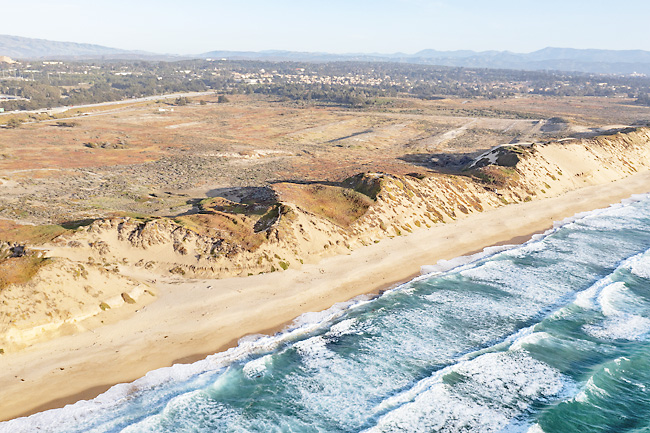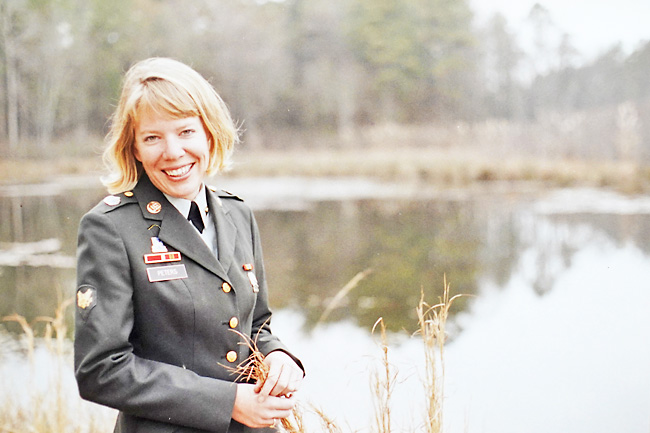FORT ORD NATIONAL MONUMENT, CALIFORNIA (AP) – For nearly 80 years, recruits reporting to central California’s Fort Ord considered themselves the lucky ones, privileged to live and work amid sparkling seas, sandy dunes and sage-covered hills.
But there was an underside, the dirty work of soldiering. Recruits tossed live grenades into the canyons of “Mortar Alley”, sprayed soapy chemicals on burn pits of scrap metal and solvents, poured toxic substances down drains and into leaky tanks they buried underground.
When it rained, poisons percolated into aquifers from which they drew drinking water. Through the years, soldiers and civilians who lived at the United States (US) Army base didn’t question whether their tap water was safe to drink.
But in 1990, four years before it began the process of closing as an active military training base, Fort Ord was added to the Environmental Protection Agency’s list of the most polluted places in the nation. Included in that pollution were dozens of chemicals, some now known to cause cancer, found in the base’s drinking water and soil.
Decades later, several Ford Ord veterans who were diagnosed with cancers – especially rare blood disorders – took the question to Facebook: Are there more of us?
Soon, the group grew to hundreds of people who had lived or served at Fort Ord and were concerned that their health problems might be tied to the chemicals there.




The Associated Press interviewed nearly two dozen of these veterans for this story and identified many more. AP also reviewed thousands of pages of documents, and interviewed military, medical and environmental scientists.
There is rarely a way to directly connect toxic exposure to a specific individual’s medical condition. Indeed, the concentrations of the toxics are tiny, measured in parts per billion or trillion, far below the levels of an immediate poisoning. Local utilities, the Defense
Department and some in the Department of Veterans Affairs (VA) insist Fort Ord’s water is safe and always has been.
But the VA’s own hazardous materials exposure website, along with scientists and doctors, agree that dangers do exist for military personnel exposed to contaminants.
The problem is not just at Fort Ord. This is happening all over the US and abroad, almost everywhere the military has set foot, and the federal government is still learning about the extent of both the pollution and the health effects of its toxic legacy.
AP’s review of public documents shows the Army knew that chemicals had been improperly dumped at Fort Ord for decades. Even after the contamination was documented, the Army downplayed the risks.
And ailing veterans are being denied benefits based on a 25-year-old health assessment. The Center for Disease Control’s Agency for Toxic Substances and Disease Registry concluded in 1996 that there were no likely past, present or future risks from exposures at Fort Ord.
But that conclusion was made based on limited data, and before medical science understood the relationship between some of these chemicals and cancer.
This is what is known: Veterans in general have higher blood cancer rates than the general population, according to VA cancer data. And in the region that includes Fort Ord, veterans have a 35-per-cent higher rate of multiple myeloma diagnosis than the general US population. Veterans like Julie Akey.
Akey, now 50, arrived at Fort Ord in 1996 with a gift for linguistics. She enlisted in the Army on the condition that she could learn a new language. And so the 25-year-old was sent to the Defense Language Institute in Monterey, California, and lived at Fort Ord as a soldier. By then the base was mostly closed but still housed troops for limited purposes.
“It was incredibly beautiful,” she said. “You have the ocean on one side, and these expansive beaches, and the rolling hills and the mountains behind.”
What she didn’t know at the time was that the ground under her feet, and the water that ran through the sandy soil into an aquifer that supplied some of the base’s drinking water was polluted. Among the contaminants were cancer-causing chemicals including trichloroethylene, also known as the miracle degreaser TCE.
She’d learn this decades later, as she tried to understand how, at just 46 and with no family history of blood cancers, she was diagnosed with multiple myeloma. “No one told us,” she said.
Despite the military’s claims that there aren’t any health problems associated with living and serving at Fort Ord, nor hundreds of other shuttered military bases, almost every closure has exposed widespread toxic pollution and required a massive cleanup. Dozens have contaminated groundwater. Fort Ord is 25 years into its cleanup as a federal Superfund site, and it’s expected to continue for decades.
Curt Gandy, a former airplane mechanic, recalls being routinely doused with toxic chemicals from the 1970s to the 1990s. He said he hosed down aircraft with solvents, cleaned engine parts and stripped paint off fuselages without any protection. There were barrels of toluene, xylene, jet fuel and more.
On Fridays, crews would forklift barrels of the used flammable liquids down a bumpy sandy road, dumping solvents, paint and metal chips onto the hulks of broken aircraft and tanks at a burn pit. One weekend a month, airfield firefighters would light up the toxic sludge and then douse the roaring fires with foam.
In 1984, an anonymous caller tipped off Fort Ord’s officials that “approximately 30 55-gallon drums”, containing about 600 gallons of a “solvent-type liquid” had been illegally spilled there, an Army report said. The state, which ordered a cleanup two years later, determined the Army had mismanaged the site in a way that threatened both ground and surface waters.
And the burn pit wasn’t the base’s only polluted site. In 1991, when the Army began investigating what had actually been disposed of at the base’s dump overlooking Monterey Bay, officials told the public the trash was similar to what one would find in the landfill of any small city, according to transcripts of community meetings.
While it’s true that much of the trash going into that dump came from nearby houses, the Army officials who spoke at the meetings made no mention of the toxic stew of paints and solvents that today are banned from open landfills.
The solvent TCE was among dozens of pollutants that scientists discovered as early as 1985 and today still exists in concentrations above the legal limit for drinking water in the aquifer below, according to local and federal water quality reports.
“The water from the aquifer above leaks down into the aquifer below and the pollution just gets deeper,” said Dan O’Brien, a former board member of the Marina Coast Water District, which took over the Army’s wells in 2001. “The toxic material remains in the soil under where it was dumped. Every time it rains, more of the toxin in the soil leeches down into the water table.”
For Akey and other veterans with cancer, it’s a matter of accountability. Health insurance, disability benefits and an acknowledgment of wrongdoing, she said, “isn’t asking for too much”.
“You’re not just serving for six years, like me, and then you’re out,” she said. “If you’ve been given cancer, that’s a life sentence.”
On a recent foggy morning, Gandy, the former airplane mechanic, walked past the rusting hangar at the old airfield where he used to work. The single-landing strip and buildings are now the Marina Municipal Airport. But much of the legacy military infrastructure remains, including sheds with old paint cans, an oil separator the size of a school bus and disconnected nozzles and hoses.
Gandy became an outspoken activist along with Levonne Stone, and also founded community groups to maintain pressure on the military to clean up the site.
His group repeatedly sued the Army, but a judge agreed with Defense Department attorneys who said the claims were moot because a rigorous clean-up was underway.
Gandy, now 70, said he talked to the base commanders, every mayor and health and safety officer. Twenty-five years later, Gandy’s comments – captured in videos and transcripts of contentious community meetings – seem prescient.
“I told them, ‘If we do what we need to do now, nobody will know that we did the right thing. But if we do it wrong, they’re going to know, because in about 20 years people are going to start dying’,” he said.






